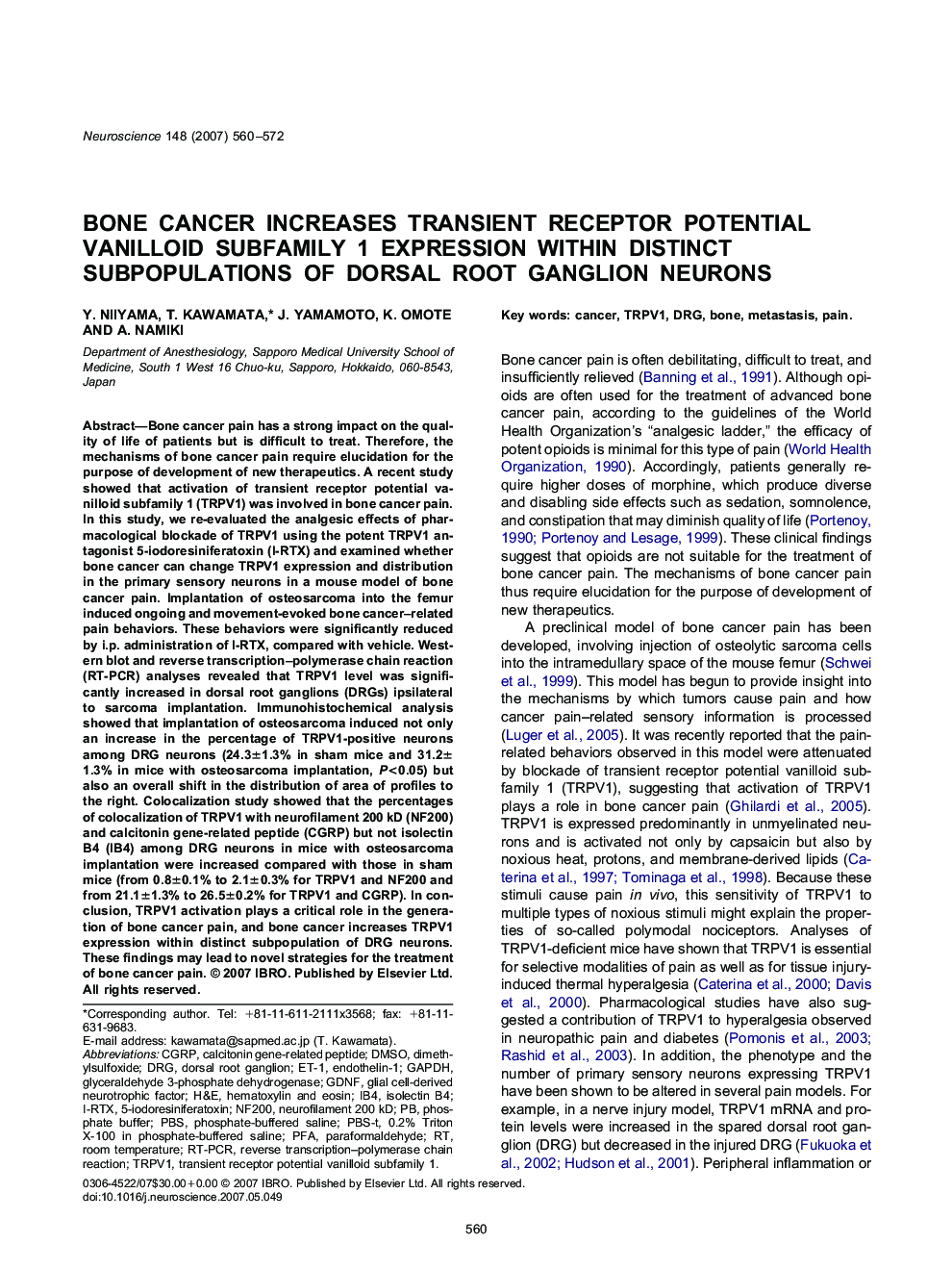| کد مقاله | کد نشریه | سال انتشار | مقاله انگلیسی | نسخه تمام متن |
|---|---|---|---|---|
| 4341344 | 1295831 | 2007 | 13 صفحه PDF | دانلود رایگان |

Bone cancer pain has a strong impact on the quality of life of patients but is difficult to treat. Therefore, the mechanisms of bone cancer pain require elucidation for the purpose of development of new therapeutics. A recent study showed that activation of transient receptor potential vanilloid subfamily 1 (TRPV1) was involved in bone cancer pain. In this study, we re-evaluated the analgesic effects of pharmacological blockade of TRPV1 using the potent TRPV1 antagonist 5-iodoresiniferatoxin (I-RTX) and examined whether bone cancer can change TRPV1 expression and distribution in the primary sensory neurons in a mouse model of bone cancer pain. Implantation of osteosarcoma into the femur induced ongoing and movement-evoked bone cancer–related pain behaviors. These behaviors were significantly reduced by i.p. administration of I-RTX, compared with vehicle. Western blot and reverse transcription–polymerase chain reaction (RT-PCR) analyses revealed that TRPV1 level was significantly increased in dorsal root ganglions (DRGs) ipsilateral to sarcoma implantation. Immunohistochemical analysis showed that implantation of osteosarcoma induced not only an increase in the percentage of TRPV1-positive neurons among DRG neurons (24.3±1.3% in sham mice and 31.2±1.3% in mice with osteosarcoma implantation, P<0.05) but also an overall shift in the distribution of area of profiles to the right. Colocalization study showed that the percentages of colocalization of TRPV1 with neurofilament 200 kD (NF200) and calcitonin gene-related peptide (CGRP) but not isolectin B4 (IB4) among DRG neurons in mice with osteosarcoma implantation were increased compared with those in sham mice (from 0.8±0.1% to 2.1±0.3% for TRPV1 and NF200 and from 21.1±1.3% to 26.5±0.2% for TRPV1 and CGRP). In conclusion, TRPV1 activation plays a critical role in the generation of bone cancer pain, and bone cancer increases TRPV1 expression within distinct subpopulation of DRG neurons. These findings may lead to novel strategies for the treatment of bone cancer pain.
Journal: Neuroscience - Volume 148, Issue 2, 24 August 2007, Pages 560–572